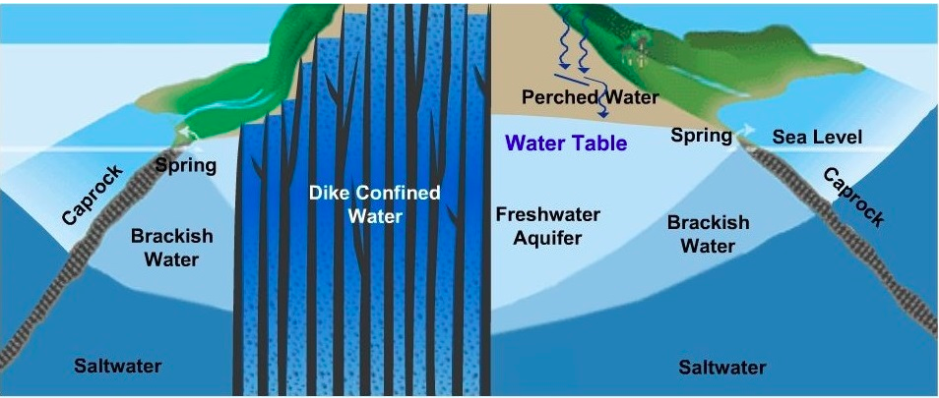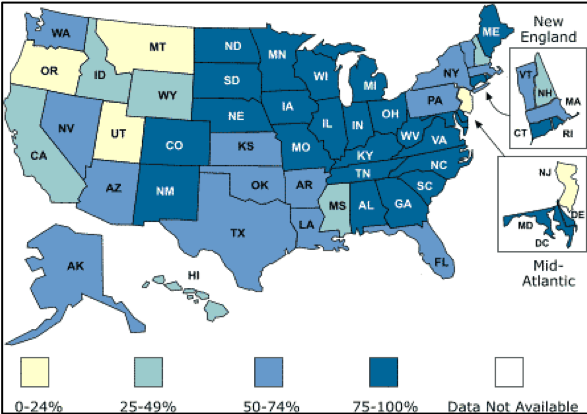WATER BLOG #6 - August 5, 2019
the importance of hawaii's groundwater
GROUNDWATER OVERVIEW: Being an isolated system, Hawaii’s freshwater availability is intimately dependent on the water cycle. The Honolulu Board of Water Supply’s website describes Hawaii’s water cycle as water moves from the atmosphere, to the ground, below the ground, and then to consumers. Trade winds, which make hot summer days more manageable, pick up moisture that evaporated from ocean water heated by the sun. Mountains also play a vital role as they help deflect moist air upwards, which cools near mountaintops and then condenses and falls to the ground. Rain is the predominant form of precipitation in Hawaii, followed by dew and fog drip.
Water from precipitation or irrigation, that hasn’t been lost as runoff, percolates through soil and then through porous volcanic rock to the water table. Sometimes water becomes ‘perched’ where it is trapped as it meets layers of volcanic ash or clay-like soil and can no longer seep downward. Perched water collects and moves sideways and can often be a valuable fresh water resource. Groundwater can also be trapped in volcanic dikes which are massive vertical compartments. Hawaii is particularly sensitive to saltwater intrusion, which occurs when water is withdrawn from the aquifer causing the fresh water lens to shrink and saltwater or brackish water to intrude upwards into areas previously held by fresh water.
Hawaii’s volcanic-rock aquifers are isolated by seawater and have a limited capacity, making them exceptionally vulnerable to the impacts of both climate change and human activity. Changes that impact Hawaii’s groundwater also include expanding urbanization, deforestation, cultivation, and the replacement of native forests to non-native forests which alters evapotranspiration rates.

Image Source: Honolulu Board of Water Supply
HOW BIG OF A DEAL IS HAWAII'S GROUNDWATER? Groundwater in Hawaii provides about 99% of domestic water use and about 50% of all freshwater used. Streams and rivers are limited and are not reliable sources of domestic fresh water, but surface water is used for irrigation.
HOW MUCH IS AVAILABLE? Hawaii’s Commission on Water Resource Management has found that some areas of the state are reaching the limits of groundwater resource development. Based on reviews of existing demands, hydrologic data, and authorized planned uses, nearly all of Oahu, Molokai, and parts of Maui have been designated as Water Management Areas. Few wells are being monitored in Hawaii due to limited funding, but in various wells studied by USGS wellheads have seen a decline. Trends of groundwater availability can be gauged by stream base flows, since that water comes from groundwater. Stream base flow monitoring has shown statistically significant downward trends in the last century in each of the major islands. Additionally, Hawaii has seen an increase in paved areas, meaning less water is absorbed into the aquifers. Hawaii's complicated groundwater system makes measuring fresh water availability a constant challenge.
HOW MUCH IS BEING USED? According to Hawaii’s Water Conservation Plan, public water systems supply approximately 205 mgd of potable water across the state and an estimated 350 mgd of water is used for irrigation. In some areas of Hawaii demand is approaching the sustainable limits of supply, with demands that are only predicted to increase in the future.
WATER BLOG #5 - MAY 6, 2019
fluoride in water controversy
BACKGROUND: In the 1930’s researchers began to study the relationship between fluoride concentrations and oral health. Scientists concluded that there was a link between high levels of naturally occurring fluoride in water supplies and lower levels of tooth decay. Fluoride naturally occurs in some rivers and lakes, and groundwater can contain high levels depending on the geology of the area. In 1945, Grand Rapids, Michigan, became the first community to add fluoride to tap water with the goal of reproducing the positive effects of naturally occurring fluoride. When compared to a neighboring town without artificial fluoride surveys indicated that children saw a 50% reduction in tooth decay in Grand Rapids. Gradually neighboring cities and states began to add artificial fluoride to water sources and continued to see positive impacts on oral health. To date, over 40 countries add fluoride to at least some of their water sources including the United States (see the following Figure: Percentage of Citizens with Access to Optimally Fluoridated Water. Source: Portland Community College, 2004), United Kingdom, Singapore, Canada and Australia.

CONTROVERSY: Although there is a general consensus among the medical community that water fluoridation at appropriate levels is effective in preventing dental cavities, there are mixed views on the most effective methods of providing fluoride therapy. Some argue that fluoride in water is not effective enough to justify the cost and the potential health problems, and that fluoride should be applied topically instead. One of the most commonly discussed potential impairments of fluoridation is mottled teeth, where teeth enamel is hypomineralized causing discoloration and sometimes physical damage. More extreme opponents link fluoridation to mental issues, thyroid problems, and cancer. The controversy behind fluoridation in water is notoriously polarized, with evidence often misused or misinterpreted with uncertainties glossed over.
WATER BLOG #4 - MARCH 28, 2019
WATER RIGHTS IN OREGON
In Oregon, all water is considered publicly owned and cities, irrigators, businesses, and other water uses (with few exceptions) must obtain a permit from the Water Resources Department to use groundwater or surface water. According to Oregon’s water laws the water must be used in a beneficial manner and not wasted. Water rights are ruled by prior appropriation where the first person to obtain a water right on a stream is the last to be shut off if water levels become too low. The Prior Appropriation law has been in place since 1909 when Oregon’s Water Code was introduced to help control the use of water.
There are four fundamental provisions for using water under Oregon’s Water Code:
1) Surface or groundwater may be legally diverted for use only if it used for beneficial purposes without waste.
2) The water right priority date determines who gets water in a time of shortage. The more senior the water right, the longer water is available in a time of shortage.
3) Generally, a water right is attached to the land described in the right, as long as the water is used. If the land is sold, the water right goes with the land to the new owner.
4) A water right must be used as provided in the right at least once every five years. After five consecutive years of non-use (with exceptions), the right is considered forfeited and is subject to cancellation.
Exemptions: There are types of water use that are exempt from the requirement of obtaining a permit. For surface water, these include natural springs, stock watering, salmon egg incubation projects, fire control, forest management, rainwater, and certain types of land management practices where water is not the primary intended activity. For groundwater, stock watering, watering of less than one-half acre of lawn or noncommercial garden, single or domestic purposes not exceeding 15,000 gallons per day, single industrial or commercial purposes not exceeding 5,000 gallons per day (excluding plant growth or irrigation), down-hole heat exchange uses, and watering school grounds ten-acres or less. These exemptions must still maintain the first provision of Oregon’s Water Code- use only for beneficial purposes and do not waste.
The Process: There is a three-step process to obtaining water permits in Oregon. First, the applicant must apply for the permit with the Water Resources Department. When the permit is granted, the second step is to construct a water system and start using the water. Third, after water has been applied, the permit holder must hire a certified water right examiner to complete a survey of the water used and develop a map detailing how and where the water is applied. Based on the report findings of the examiner, a water right certificate will be issued.
Challenges: Since water belongs to the public, in order to turn down an application the State of Oregon has to prove that its use is against the public interest. The code doesn’t specifically define ‘public interest’, making it easier to argue for its use. Since rights to use water are assigned by the state, it doesn’t cost anything to obtain a water right, and water rights remain attached to specific properties. Due to the five-year, ‘use it or lose it’ clause, there are often unnecessary withdrawals just to prevent losing the water right. Water must be used for beneficial purposes and not wasted, but beneficial water use has not been defined by the law and neither has waste.
Source: Water Rights in Oregon, 2013
Water Blog #3 - FEbruary 21, 2019
What's recycled water all about?
Water reuse can be broken into two main types, non-potable and potable. Non-potable projects treat wastewater for purposes other than drinking, such as for irrigation, industrial uses, or to replenish recreational lakes or wetlands. Potable reuse requires a higher treatment of reclaimed wastewater and is used for drinking and other purposes.
Non-Potable Reuse: Usually has lower water quality objectives than potable reuse since this water is not intended for drinking. The levels of treatment vary depending on what the end goal is, which can vary from flushing toilets to landscaping, decorative foundations, replenishing ecosystems, and even filling fire hydrants. Non-potable requires a dual distribution system (often called purple pipes) to keep this water from contaminating potable supplies.
- Onsite Non-Potable Water Reuse: Capturing and treating water in close proximity to its collection and next use. For a building, water that can be reused is typically rainwater, stormwater, or wastewater. With onsite reuse, this water can be reused in the building rather than carried away and wasted. The resulting water is matched appropriately with a use, depending on its level of quality. Subject to local regulations, non-potable water can be used to flush toilets or irrigate landscaping rather than using higher quality potable water.
- Wastewater Treatment Plants: Produce “recycled” or “reclaimed” water that is redistributed for various uses (such as golf course irrigation) depending on the level of treatment and local regulations.
Potable Reuse: Usually has higher water quality objectives than those of non-potable reuse and the treatment level generally depends on the end use.
- Indirect Potable Reuse (IPR): Introduces purified water into an environmental buffer (groundwater aquifer, surface reservoir, lake, river, esc.) before the blended water is introduced into a water supply system.
- Direct Potable Reuse (DPR): Introduces purified water directly into an existing water supply system. Since potable reuse results in high quality water, there are various, diverse end uses for the water. Potable reuse is a more efficient use of existing water supplies, potentially decreases the amount of water imported into urban areas, reduces groundwater extraction, and minimizes wastewater discharges to the environment.
Regulations: As for regulations, states and local agencies are responsible for setting reuse regulations since federal potable reuse standards have not yet been developed in the U.S. All potable water distributed must meet standards derived from the Safe Drinking Water Act. Potable reuse generally goes through a preliminary, primary, secondary and tertiary treatment before moving to the second point of treatment which can include biological treatment, membrane filtration, ozone, and advanced oxidation. For IPR, an environmental buffer is used as a third point of treatment.
Benefits: Water reuse helps provide a dependable, locally-controlled water supply that helps reduce the impact on both surface and groundwater systems. Environmentally, water reuse can help decrease the need for water diversions and can also be used to enhance wetlands or riparian habitats. Since wastewater is reused and not discharged into oceans, lakes, or streams, it can help prevent the pollution of natural water systems. Recycling water onsite or nearby can also reduce the energy needed to move water longer distances or pump from deep within aquifers.
Source: US EPA
Water Blog #2 - October 3, 2018
What is the clean water act?
Overview. For decades now, the Clean Water Act has helped establish a basic structure of regulating both the discharge of pollutants into waters and the regulation of water quality standards for surface waters. The basis of the Clean Water Act was devised in 1948 as the Federal Water Pollution Control Act, but was reorganized in 1972 and has since then lead the EPA in regulating water safety standards. The overall mission of the law is to restore and maintain the chemical, physical, and biological integrity of our nation’s waters. To date, the Clean Water Act has helped improve the quality of lakes, rivers, and streams in the United States along with restoring areas for fishing and recreation and keeping industrial pollutants out of water sources.
National Pollutant Discharge Elimination System (NPDES). The NPDES program requires that any site operator (on a 1+ acre project) and/ or building facility intending to discharge into U.S. waters obtain a permit before initiating any type of stormwater release. NPDES permits help improve water quality in various bodies of water by preventing pollution from point sources. Point source pollution is considered any single identifiable source of pollution from which pollutants are discharges, such as from factories or sewage treatment plants.
Eventually non-point pollution, or pollution caused by rainfall picking up and carrying away pollutants, was identified as an additional contributor to reduced water quality. In 1987, the Clean Water Act was amended to require medium and large municipalities to obtain NPDES permits for stormwater from various categories of discharge, including medium MS4s (municipal separate storm water sewer systems). In 1999, regulations were amended again to require stormwater permits for small MS4s and construction sites of one to five acres.
Funding Opportunities. The Clean Water State Revolving Fund (CWSRF) was established by the 1987 amendments to the Clean Water Act as a financial assistance program for a wide range of water infrastructure projects. It is a federal-state partnership that provides communities a permanent, independent source of low-cost financing for a wide range of water quality infrastructure projects. The EPA funds state CWSRFs with a 20% state match and communities, private entities, nonprofits, or citizen groups are eligible depending on the state and project type. Projects can include municipal wastewater facilities, water reuse, control of nonpoint pollution, green infrastructure projects, and project estuaries. CWSRFs offer a variety of financial assistance options including low and no interest loans and subsidization.
Current Status. Because of the Clean Water Act, waters today are substantially better off with less pollution and better regulations. The goal of the Clean Water Act, however, has not been met as many United States waters are still not considered fishable or swimmable. The 2012 National Lakes Assessment found that 35% of lakes have excess nitrogen, and the Rivers and Streams Assessment of 2009 found that less than 30% of rivers and streams are in good condition. The Trump Administration is working diligently to roll back more stringent clean water rules of the Obama Administration, including the 2015 Waters of the United States rule that was designed to limit pollution in about 60% of US bodies of water. The Trump Administration has also threatened to reduce protection for streams and wetlands throughout the administration’s term.
Source: United State Environmental Protection Agency
Water Blog 1 - August 21, 2018
What Does the ‘One Water’ Movement Stand For?
Ultimately, all water can be considered recycled water since the same water droplets are repeatedly part of the Earth’s water cycle. Stormwater that makes it into the aquifer is absorbed by plants, transpired into the clouds as condensation, and then falls to the ground again as precipitation. Modern day civilization has managed to interrupt this perfect cycle by over-extracting and introducing contaminants, but water remains valuable regardless of how it’s been treated. Where previously water was defined by its use- stormwater, wastewater, drinking water- the One Water movement is working to promote the intrinsic value that all forms of water represent.
Underlying the One Water approach is the desire to design and implement projects and programs with a focus on achieving multiple economic, environmental, and social benefits. These designs must respect and respond to the natural flows of watersheds and the ecosystems, geology, and hydrology of the area. The US Water Alliance has developed a roadmap towards a more sustainable, One Water approach to water management that includes the following guiding principles:
- All water has value: All water has an intrinsic value and all water must be managed carefully to maximize its benefit.
- Achieve multiple benefits: Design and implement projects and programs with a focus on achieving multiple benefits- economic, environmental, and social.
- Take a systems approach: Tackle problems based on the complete life cycle of water and larger infrastructure systems to identify and advance more effective and lasting solutions.
- Watershed-scale thinking and action: Make decisions at the level of the watershed, taking into consideration the unique features of an area.
- Right-sized solutions: Understand the appropriate scale for the most impact.
- Partnerships for progress: Since all sectors are part of a water-secure future, partnerships are the cornerstone to progress.
- Inclusion and engagement of all: Since all people have a stake in ensuring a water-secure future, everyone should be included.
Since the One Water approach is gaining traction throughout various sectors, areas of action have been devised to help create the most impactful benefits. These cover a range of issues, including: reliable and resilient water utilities, thriving cities, sustainable agriculture; competitive business and industry, social and economic inclusion, and healthy waterways. Together these actions should lead to tangible changes in the way water is managed, used, and expended.
